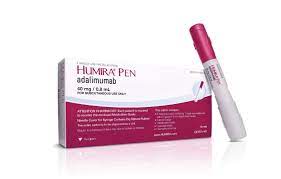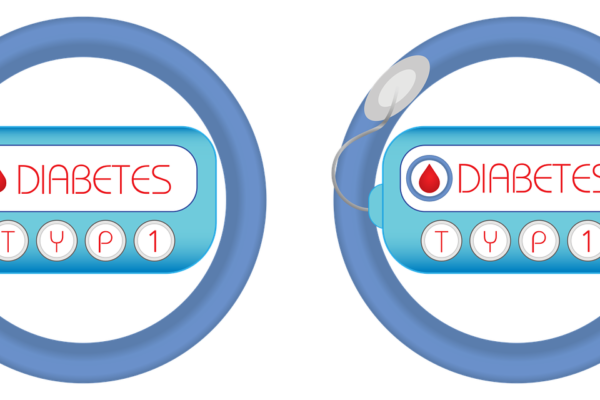About Tuberculosis
Bedaquiline targets Tuberculosis (TB) is a bacterial infection caused by Mycobacterium tuberculosis. It primarily affects the lungs but can also affect other parts of the body, such as the kidneys, spine, and brain. TB is a contagious disease, and it spreads through the air when an infected person coughs, sneezes, or talks, releasing droplets containing the bacteria. It is possible to prevent and treat tuberculosis.
The TB bacteria is believed to have infected about a quarter of the world’s population. Approximately 5–10% of those who catch TB eventually experience symptoms and develop the disease.A person cannot spread the disease if they are infected but not (yet) ill with it.
Babies and young children in several nations receive the Bacille Calmette-Guérin (BCG) vaccine to prevent tuberculosis (TB). The vaccine shields against TB outside the lungs but not within.
Antibiotics are typically used to treat TB disease, which can be lethal if left untreated.
The most widely used antibiotics are: isoniazid, rifampin , pyrazinamide, ethambutol and streptomycin. These medicines must be taken consistently for 4-6 months in order to work. It is risky to stop taking the drugs too soon or without consulting a doctor. This may enable TB that is currently active to develop medication resistance.
Drug resistance develops when TB medications are administered improperly, as a result of faulty prescribing by healthcare professionals, using subpar medications, or when patients discontinue their therapy too soon.
MDR-TB is a type of tuberculosis brought on by bacteria that are resistant to rifampicin and isoniazid, the two most potent first-line TB medications. Second-line medications can be used to treat and even eradicate MDR-TB. However, second-line therapy options call for expensive, toxic, and lengthy medications.
More widespread drug resistance may occur in particular situations. Patients with TB caused by germs that may not respond to the best second-line TB medications may have very few therapy alternatives.
MDR-TB is still a public health emergency and a security risk to health. In 2021, just around 1 in 3 individuals with drug-resistant TB received treatment.
According to WHO recommendations, bacteriological confirmation of TB and testing for drug resistance utilising quick molecular tests or culture techniques are required for the diagnosis of MDR/RR-TB.
Significance of Bedaquiline
In many parts of the world, Tuberculosis (TB) is a major cause of mortality and illness. Due to COVID-19 pandemic-related interruptions, a total of 5.8 million new cases were diagnosed and reported in 2020, an 18% decrease from the 7.1 million cases reported in 2019. As a result, there were more TB-related deaths in 2020 (1.3 million compared to 1.2 million in 2019). Geographically, Southeast Asia (43% of cases) and Africa (25% of cases) saw the highest rates of TB cases in 2020.
Drug-resistant tuberculosis (DR-TB) is still a major obstacle to the global control of TB. Globally, the burden of rifampicin-mono-resistant-TB (RR-TB) or multidrug-resistant (MDR)-TB, defined as Mycobacterium tuberculosis strains that are resistant to at least isoniazid and rifampicin, has been stable over the last 10 years, with an estimated 3-4% of new TB cases and 18-21% of previously treated cases being diagnosed as RR- or MDR-TB .
Only 59% of patients who developed MDR/RR-TB were successfully treated in 2018, despite advancements in testing, identification, and treatment. Although MDR-TB is treatable, short-course conventional medication cannot fully treat patients. The standard course of treatment for MDR-TB has included up to 2 years of administration of second-line anti-TB medications from the 1980s and 1990s, which are primarily bacteriostatic and have a negative side-effect profile.
The introduction of novel medicines and treatment regimens is essential for the control of this disease given the establishment of considerable drug resistance and low treatment success rates.
An antimycobacterial medicine called Bedaquiline is used to treat MDR-TB, or multidrug-resistant tuberculosis. It is sold under the brand name “Sirturo.” The U.S. Food and Drug Administration (FDA) granted bedaquiline approval in December 2012 after Janssen Pharmaceutica, a Johnson & Johnson subsidiary, developed the medication.
A kind of tuberculosis known as MDR-TB is resistant to at least two of the most potent first-line antitubercular medications, rifampicin and isoniazid. Due to this, it is difficult to treat and requires other medications like bedaquiline to effectively treat the infection.
Bedaquiline is used to treat MDR-TB, a serious infection of the lungs and other parts of the body that cannot be treated with other drugs that are typically used to treat the condition, in adults and children 5 years of age and older who weigh at least 33 lbs (15 kg).
Bedaquiline is crucial because it is less toxic and more effective than conventional TB therapies. It is also the first TB medicine to be authorised globally in over forty years.
The way bedaquiline works is by preventing the creation of an enzyme called ATP synthase, which is necessary for the bacteria that cause tuberculosis to produce energy (ATP). Bedaquiline interferes with the bacterial ability to produce energy by specifically targeting this enzyme, which ultimately causes the germs to perish.
In order to improve the efficacy of treatment and lower the danger of developing new drug resistance, bedaquiline is frequently used in conjunction with other antibiotics for MDR-TB.
Nausea, joint pain, headaches, and chest pain are typical side effects. QT prolongation, liver dysfunction, and an elevated risk of mortality are serious adverse effects.
Bedaquiline is a diarylquinoline antimycobacterial drug with bactericidal and sterilising effects that acts in an innovative manner by inhibiting ATP synthase. Bedaquiline-based regimens have been shown to be effective in the treatment of MDR-TB in numerous Phase 2 and real-world studies, with a favourable association with treatment outcomes and decreased mortality and potential for shortening treatment duration.
Bedaquiline Market Share
According to a recent analysis, the market for medications and treatments for tuberculosis (TB) is anticipated to reach USD 1.38 billion by 2025, growing at a CAGR of 5.2% over the projected period. Increasing rates of HIV-tuberculosis co-infection and Multidrug Resistant (MDR) tuberculosis are projected to propel the market throughout the forecast period. In India, there were 2.8 million cases of tuberculosis (TB) annually in 2017, and there were an estimated 147,000 cases that were multi-drug resistant. With 87,000 cases estimated per year, India is estimated to have the second highest rate of HIV-TB co-infection.
Due to the development of medical therapies with shorter regimens and the availability of both private and governmental funding, the market for TB medications is anticipated to experience rapid expansion in the upcoming years.
Additionally, the market has grown significantly due to the rise of multidrug-resistant (MDR) tuberculosis cases. The WHO estimates that 3.6% of MDR/RR-TB infections will be found globally in 2021. Numerous actions and activities are being conducted to combat the worrying condition of tuberculosis due to rising incidence rates. For instance, a transformative alliance was established in October 2022 to support the World Health Organization’s plan to eradicate the tuberculosis pandemic by 2035.
The hefty expenses associated with the condition’s treatment, however, are preventing the market from expanding. One of the main global public health issues is MDR TB. According to estimates, there are half a million instances of MDR TB1 per year, including many cases that are extremely drug-resistant. Despite the fact that the number of cases is growing quickly, the treatment is expensive, takes longer to complete, and may have adverse effects that could be fatal. The CDC estimates that for MDR TB, the average direct treatment cost for tuberculosis is roughly USD 182,186.
In addition to competitive dynamics, licence agreements between businesses are giving developing pharma producers a chance to expand in this market. Dishman Group was granted a licence by Janssen Pharmaceutica NV, a division of Johnson & Johnson Services, LLC, in September 2015 to manufacture the active pharmaceutical ingredient (API) for the medicine Sirturo (bedaquiline), which is used to treat MDR TB. Dishman is currently recognised as a licenced API manufacturer with the EMA, USFDA, and numerous Asian regulatory bodies in addition to being an API supplier for Janssen’s innovative medication.
Due to the high disease incidence and progressive increase in patient medication adherence rates, Asia Pacific now holds a significant market share and is anticipated to maintain its dominance during the projection period.
The countries with the highest rates of tuberculosis include Indonesia (9.2%), India (28%), the Philippines (7.0%), China (7.4%), Pakistan (5.8%), Bangladesh (3.6%), South Africa (3.3%), and Nigeria (4.4%). WHO reports that these 8 nations account for two thirds of all TB cases worldwide.
Due to the high prevalence of MDR-TB and increased attention to LTBI treatment medications, Europe is expected to have significant growth over the next ten years.
Johnson & Johnson (J&J) Services, Lupin, Pfizer, Novartis AG, Macleods Pharmaceuticals Limited, and Otsuka Pharmaceutical Co., Ltd. are a few of the major competitors in the tuberculosis medicine market.
Bedaquiline has been granted secondary patents by J&J through 2027 in 66 low- and middle-income nations. It comprises 34 nations where the prevalence of TB, MDR-TB, and TB/HIV is high. Through these patents, J&J is continuing to hold a stranglehold on the bedaquiline market.
In India, the Indian Patent Office denied J&J’s supplementary patent application, which would have given it a 4-year extension of its monopoly.
In a landmark development, Johnson & Johnson and the organisation Global Drug Facility have agreed to share generic versions of the anti-tuberculosis medication bedaquiline across the majority of low- and middle-income nations. As a result of the deal, generic drug producers in India should be able to sell the medication for an 80% reduced cost. And at least three Indian companies, Lupin, Natco, MacLeod are preparing to bring out generic versions of the drug. The tender for bedaquiline will shortly be released, and the objective is to eradicate TB.With the help of this discovery, the medicine may become more easily and affordably available, aiding efforts to eradicate TB globally by 2030.
It’s important to note that, MDR-TB is frequently treated with a cocktail of many medications in order to boost effectiveness and lower the chance of developing new drug resistance. For the treatment of MDR-TB, other medications that are frequently used with bedaquiline include:
Antibiotic linezolid, which is effective against MDR-TB and other microorganisms with drug resistance.
Another antibiotic that has been effective against MDR-TB is clofazimine.
Delamanid is also a more recent drug that treats MDR-TB and is similar to bedaquiline.
Fluoroquinolones is included in treatment plans for MDR-TB and may also include the use of medications like moxifloxacin and levofloxacin.
Based on the unique drug sensitivity of the infecting strain, these medications, along with bedaquiline, make up the foundation of treatment for MDR-TB.
Conclusion
It is crucial to understand that the pharmaceutical industry is always evolving and that new medications or treatments may have been created or approved. An antimycobacterial medicine called Bedaquiline is used to treat MDR-TB, or multidrug-resistant tuberculosis and has had positive feedback in the market. Despite these encouraging results, the fight against TB faces ongoing difficulties. Future market growth may be impacted by funding shortages, treatment adherence problems, and the effect of the COVID-19 pandemic on healthcare systems
References:
https://www.cdc.gov/tb/publications/factsheets/treatment/bedaquiline.htm
https://bmcinfectdis.biomedcentral.com/articles/10.1186/s12879-022-07861-x
https://www.tballiance.org/access/tb-market-access-research
https://www.alliedmarketresearch.com/tuberculosis-treatment-drugs-market-A13238
https://www.thehindubusinessline.com/companies/tb-underdiagnosis-a-significant-barrier-to-treatment-access-jj-on-bedaquiline/article67110017.ecehttps://www.who.int/news-room/fact-sheets/detail/tuberculosis#:~:text=Tuberculosis%20(TB)%20is%20an%20infectious,been%20infected%20with%20TB%20bacteria.






Leave a Reply